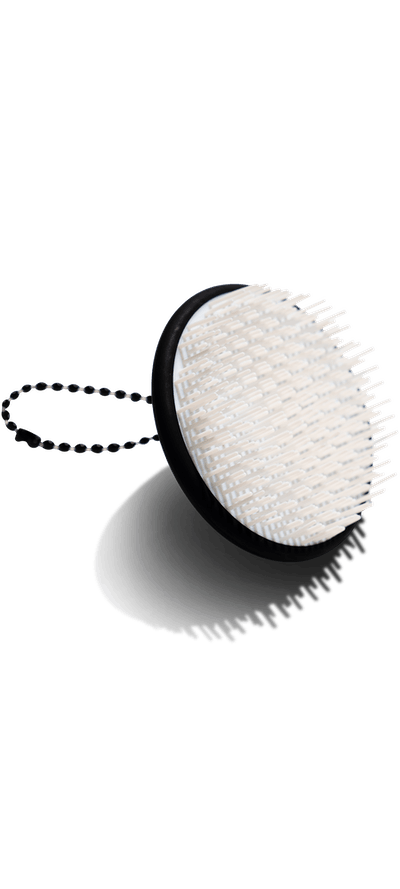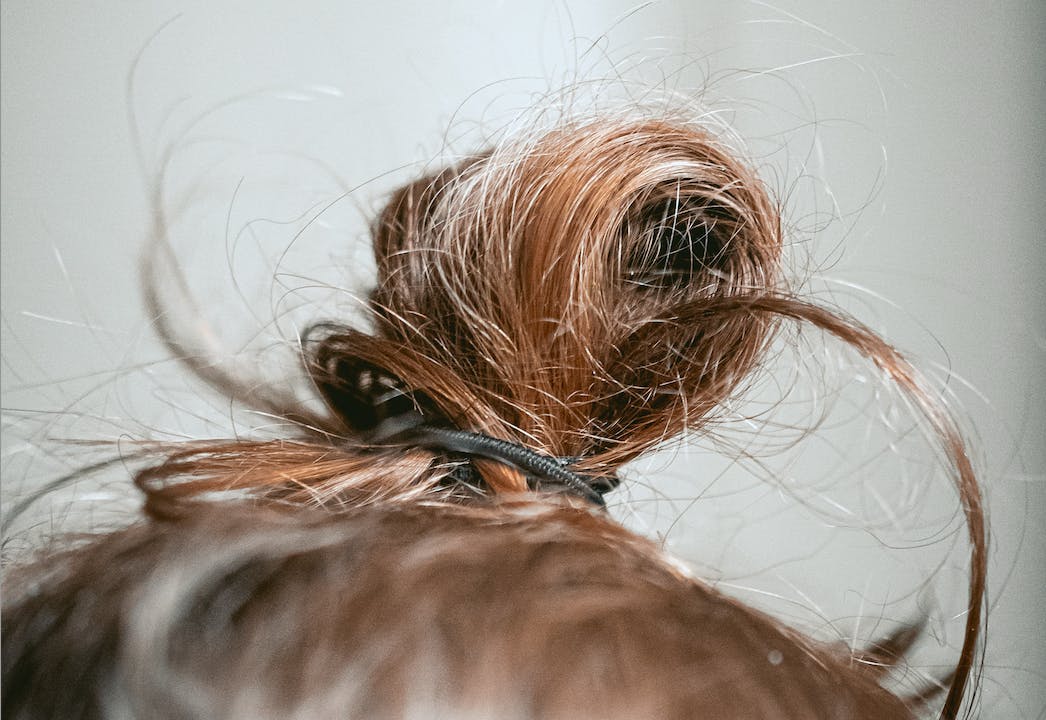#MakeMillionsMoreConfident with Strong Girls United
#MakeMillionsMoreConfident with Strong Girls United
A delicate ecosystem of bacteria, oils, fungi, and skin cells cohabitate at the roots of our hair. Sometimes after we’ve missed a few wash days, we’d swear those organisms are all purposely trying to cause us grief, with our scalp feeling itchy, irritated, and sore.
The truth is, that’s not entirely far from reality.
Build-up on our scalp, or an excess of sebum, hair care products, or sweat, can lead to unsettling symptoms like flaking, irritation, and discomfort. That’s why it’s so important to regularly cleanse and exfoliate your scalp.
Not only will cleansing and exfoliating improve the health and appearance of your hair, but it will also ensure that those organisms on your head are coexisting as they should.
Why Does Build-Up Happen?
The answers tend to differ for everyone here, but we’ll outline some of the most significant contributors to scalp build-up so you can see what’s likely happening to you. Generally, we’d classify the condition into two categories: natural and product build-up.
Natural Build-Up: Just like the skin on the rest of our bodies, our scalps are constantly going through a regenerative cycle, building new skin cells and shedding the old. Sometimes those processes get out of whack, with fungal overgrowths or skin conditions like eczema leading to irritation and flaking.
Dandruff tends to happen when a fungus called Malassezia (which naturally occurs on your skin) overindulges on your scalp’s sebum — the oils hair glands produce. This can lead to oily flakes building up on your scalp. If you’re seeing build-up and not using any hair styling products, it’s likely due to something out of balance in your scalp’s microbiome.
Product Build-Up: You could see build-up on your scalp because of hair product excess overstaying its welcome. If you’re using products like styling creams, dry shampoos, leave-in conditioners, or gels — anything with a waxy finish, and inadequately rinsing them from your scalp, residue can happen.
Knowing what’s causing your scalp build-up is the first step in understanding how to treat it.
Why Should You Treat Build-Up?
Healthy and happy hair starts at the scalp. So, you’ll want to pay as much attention to the care of that skin as you do the skin on your face. It’s kind of like going to bed without removing your makeup and washing your face; failing to regularly cleanse your scalp can leave you feeling just as icky.
Furthermore, when you leave build-up as is, you’re more likely to experience various symptoms like flaking, itching, redness, and even hair loss.
We don’t know about you, but that’s enough for us to take crusty scalp build-up very seriously.
How To Get Rid of Build-Up
So far, we’ve outlined what can cause build-up and why it’s so important to regularly take care of it. Now let’s get into what you can do to maintain balance and harmony on your scalp.
Make Sure You’re Using the Right Products
This one is so important. There are seemingly endless options for shampoos, conditioners, and serums, and it can be hard to know which ones actually support a healthy scalp. In order to settle on a new hair care routine, you’re going to need to take a closer look at the ingredients.
Here are some factors to consider when purchasing products:
Is your scalp naturally more oily or dry? This will impact how often you should be washing.
Are your hair strands thick or thin? What does your curl pattern look like?
Has your hair experienced damage due to chemical treatments or heat?
How much of your daily hair care products are essential?
Everyone’s hair is different, and knowing exactly what your scalp is craving will help you find the right routine to treat and care for it. Take our quiz to see how you can build a product regimen that prioritizes your scalp’s health.
Use Your Products Correctly
You’d be surprised just how many people are not washing their hair correctly or effectively. Depending on how often you should be washing your specific hair type, follow these tips to get the most out of your wash days:
Fully soak your hair before applying the shampoo.
Lather the shampoo in your hand before applying it to your head.
Use your fingers (or a scalp brush!) to work the shampoo into your scalp thoroughly.
Be gentle and sensitive to any sore spots.
Once you start washing your hair the right way, you’ll start to see a difference in the quality of your hair health.
Cut Down on Your Styling Product Use
With salon shelves fully stocked, it can be tempting to reach for product after product to try on our hair.
The fact is, our scalp has a natural and effective process for clearing away dead skin cells and producing hair growth. The more products we introduce to this process, the more likely it is for our natural cycle to get confused.
Try to minimize how often you’re using styling products in between washes. Give your hair a break from the dry shampoos and the gels, and let it air dry after a wash.
Our hair is resilient, but it has its limits. Both our scalps and our hair strands have natural barriers that prevent external agents from doing damage — when we disrupt those bonds with chemicals, heat, and waxy products, we can inadvertently do harm to our scalp.
Try a Scalp Brush
Our fingers can work well for lathering shampoos and working them into our scalps, but they’ve got nothing on scalp brushes. Designed for use on our hair’s roots, scalp brushes are flexible and gentle tools that can help us clear away the oily and crusty build-up when used on a dry scalp, and work in product while showering. Two major reasons why scalp brushes are our favorite hair care accessory:
They are expert exfoliators. Scalp brushes, primarily when used on a dry scalp and dry hair, can clear away excess oils much better than our fingers.
They feel so good. While you clear away build-up, you’re also experiencing a luxurious head massage you didn’t need to go to the salon for.
Interested in giving a scalp brush a try? Check out Jupiter’s Scalp Brush and use it on a dry scalp before you shampoo and in the shower for maximum massaging.
Designed for use on our hair’s roots, scalp brushes are flexible and gentle tools that can help us clear away the oily and crusty build-up...
Use A Purifying Mask
We all have a bit of excess build-up on our scalp. That’s why Jupiter’s Purifying Mask gently clears away dead skin and buildup, creating the perfect at-home exfoliating spa treatment.
Designed for a weekly reset, this clarifying mask has mineral-rich volcanic ash that pulls out impurities while other quality ingredients like argan oil, biotin, and panthenol helps nourish the scalp,
Keep Your Hair Detangled
Regularly detangling your hair can have a positive impact on scalp build-up. Knots and mats on our scalp offer excess oils and hair products more hiding spots to sneak into. What’s more, gentle brushing can exfoliate the scalp and clear away build-up.
When you’re brushing the ends of your hair, we recommend holding the hair on top so you prevent breakage that may occur from pulling too aggressively at the roots.
All in all, a healthy scalp makes for a happy head of hair. While build-up can feel embarrassing or gross, remember that it’s nothing to worry about. Most people will experience this at some point, and there are plenty of solutions to help you move onward and upward and into your best hair life.
When You Should See a Doctor
It’s important to note that sometimes build-up isn’t so simply dealt with. If you’re finding that the treatments above are having no or little impact on the health of your scalp, you should seek advice from your dermatologist or trichologist.
The irritation may be tied to a condition like eczema, psoriasis, or an unusually stubborn case of dandruff. If your scalp feels uncomfortable and the at-home treatments aren’t doing the trick, we recommend seeking out medical advice.
Remember that your head is not a place for a science experiment. While some DIY remedies can be helpful, improper dosage and treatment can lead to a slew of other issues. Trust the experts and make sure your scalp is getting the attention it deserves.
Say Goodbye To Build-Up
Let’s recap what we’ve covered today. If you’re experiencing build-up, here’s what you should know:
Take a close look at your scalp and hair type to identify how you can treat it.
Try a new shampoo that cleanses your hair without stripping it of its natural oils.
Minimize and take days off from waxy products.
Use the shampoo correctly, thoroughly working it into your roots and fully rinsing it out.
Try a scalp brush and exfoliating scalp mask to clear your scalp of buildup.
Regularly detangle your hair.
Whether we’re not up for a wash day, don’t properly rinse out products, or our microbiome has fallen out of sync, there’s no excuse for neglecting this critical and sensitive part of our bodies.
Say goodbye to build-up with Jupiter’s Scalp Brush and Purifying Mask. The dynamic duo will help eliminate excess buildup -- leaving you feeling cool, calm, collected, and smelling sublime.

Elevate your scalp care routine with our award-winning Scalp Brush. Designed with gentle yet effective silicone bristles, it stimulates circulation, removes buildup, and enhances the absorption of your favorite scalp treatments—all while giving you a soothing, spa-like experience.

































